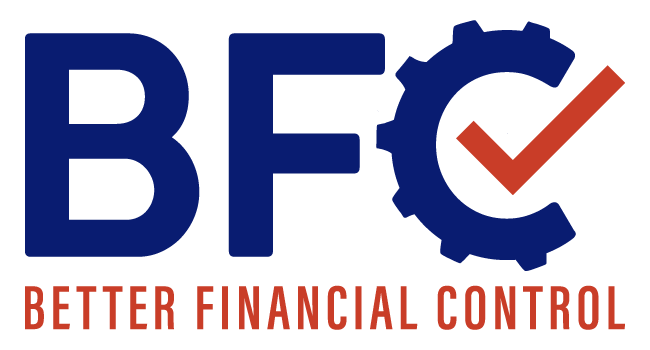When is the last time you wished you could improve your business organisation? Many business owners tell us they recently felt that way when they wanted to look into some potential financing options. Others comment on how they didn’t feel comfortable having a discussion with a potential buyer or investor because they didn’t want to reveal the disorder lingering beneath the surface of their business.
Beyond the often trivial or fleeting feeling of a little embarrassment that can come from thinking about sharing your company details with an outsider, there are often real costs that are associated with having an out-of-shape and dysfunctional company.
In this three-part guide, we will take you through the stages of improving your business organisation, first by identifying what a disorganised company looks like, and then delving into the problems this may instigate, before presenting a collection of solutions towards creating a business profile you can truly be proud of.
This week, we begin with identifying the warning signs that may suggest a lack of organisation within your business.
What a Disorganised Company Looks Like
But before we explore some of the challenges created by not having an organised business next week, it will likely help to clarify what creates that lingering feeling of disorganisation within a company.
Describing a disorganised or ‘out of shape’ company can be done by breaking out the three component parts of any business – its people, its processes and its technology.
The People Within a Messy Business
If a team is unfocussed, despondent or poorly informed on a company’s structure and functionality, it can cause some reluctance, even embarrassment when presented to prospective employees, investors or clients. Team members will likely be unclear on the company’s direction, what the company stands for, or what its financial structure is.
The team members of a disorganised company frequently don’t come across as passionate or motivated in what they do or how their input supports the company’s financial position at large. They will frequently display a myopic focus on what is relevant to them, without much appreciation for the greater investment or implications of their work.
There can also be perceptible cliques within the organisation that create a certain polarisation or dissociation with the company or team as a whole. This may not be recognisable at a level of a potential investor, but if a key potential employee spends much time talking with various team members the cracks in the team quickly begin to appear.
Processes within an Out of Shape Business
A disorganised company lacks the clarity to perform consistently. This is partly due to not having clearly defined processes, but also by not having the discipline to train new members of the financial team consistently, thereby instilling strong habits that endure over time.
Common symptoms of companies with insufficient processes are:
- Low profitability due to inefficiency and elevated labour costs
- Difficulty in training staff to be productive quickly
- Repeating mistakes already experienced by the company
- Low levels of accountability by team members when things go wrong
- Difficulty in delegating tasks and activities away from the strongest team members.
Technology within a Disorganised Business
Messy companies often have numerous Band-Aid fixes or partial technology solutions. These partial technology solutions lead to a lack of trust in the data and knowledge that resides within the various systems. This then generates a number of bad habits that lead to ineffective reporting and numerous direct and indirect costs to the company and the company’s owners.
Some bad habits are:
- Creating manual work-arounds for otherwise automated or centralised processes that result in conflicting information in multiple locations
- Not using certain functionality within existing applications through laziness or a lack of education
- Duplicating numerical data and maintaining it in spreadsheets rather than in the native application. This is frequently seen in Cloud-based accounting software
- Using one’s ‘gut’ rather than actual financial performance information because the data isn’t accurate. Leaders tend to use ‘gut instinct’ rather than information when they don’t trust their data. This is how most businesses financially fail. Leaders then try to estimate cashflow requirements rather than turn to validated data and take the appropriate actions.
If any of this sounds remotely familiar, it could be that your business organisation is distinctly lacking in some areas. The issues may be minimal and the solutions simple, but by acknowledging the underlying issue and further analysing your company processes, you can increase efficiency, promote morale and avoid potential financial impact to and even failure of your business.
If you are unsure of your business’s health status or are uncertain about how to take the next step, feel free to book a free clarity session with us today.
And, as always, enjoy the process!

![CrossFit for Your Business: A 3-Step Guide to Business Organisation [part 1] 1 Business Organisation](https://betterfinancialcontrol.com/wp-content/uploads/2022/11/BFC-Graphics-28-1400x796.jpg)
![CrossFit for Your Business: A 3-Step Guide to Business Organisation [part 1] 10 Business Organisation](https://betterfinancialcontrol.com/wp-content/uploads/2022/11/Business-Organisation2.jpg)
![Creating an Effective Business Operating System [Part 1] 2 Bfc Graphics](https://betterfinancialcontrol.com/wp-content/uploads/2023/05/BFC-Graphics-703x400.jpg)
![A Consistent Approach to Clarifying Your Business Strategy [Part 2] 3 Business Strategy](https://betterfinancialcontrol.com/wp-content/uploads/2023/03/BFC-Graphics-1-704x400.jpg)
![A Consistent Approach to Clarifying Your Company Strategy [Part 1] 4 Bfc Graphics](https://betterfinancialcontrol.com/wp-content/uploads/2023/03/BFC-Graphics-704x400.jpg)



![CrossFit for Your Business: A 3-Step Guide to Organise Your Business [part 3] 8 Organise Your Business](https://betterfinancialcontrol.com/wp-content/uploads/2022/11/5E5016F7-FE2E-42D8-AE63-37599B23E01B-704x400.jpeg)
![CrossFit for Your Business: A 3-Step Guide to Business Organisation [part 2] 9 Company Organisation](https://betterfinancialcontrol.com/wp-content/uploads/2022/11/BFC-Graphics-29-704x400.jpg)